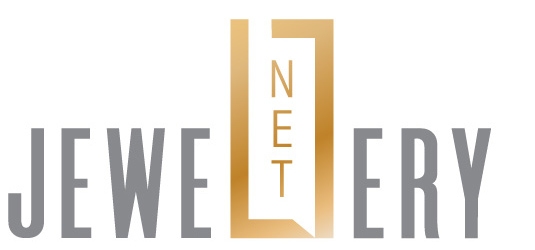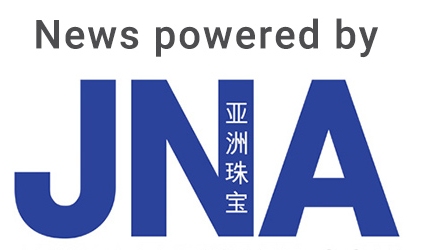Jewellery and gemstone companies are adjusting their strategies to mitigate the impact of new US reciprocal tariffs that come into effect on August 1, 2025. At press time, negotiations are ongoing for further reductions, but most import duties remain significantly high.
Brazil’s gemstone sector could face headwinds, should US President Donald Trump’s threatened 50 per cent tariff on imports from Brazil pushes through.
Marcelo Ribeiro, president of Brazil’s Belmont Emeralds, said a 50 per cent duty on Brazilian gems is effectively an economic sanction.
“Such tariff levels would make business virtually unviable,” noted Ribeiro. “As a result, rough stones would be exported and processed in other countries before entering the US and would no longer be considered Brazilian goods for tariff purposes.”
There is no significant impact on emeralds though. Belmont, for instance, exports 95 per cent of rough emeralds to India for manufacturing.
Still, the US is a key importer of Brazilian gems as it purchases around 30 per cent of Brazil’s overall production, noted Ribeiro.
“Belmont will not be impacted directly since our emeralds are not subject to this new tariff. However, the impact on Brazilian gem and jewellery manufacturers could be significant,” he added. “This level of tariff places them at a major disadvantage in the US market.”
The Brazilian government is actively negotiating with the US administration before the supposed tariff implementation on August 1, revealed Ribeiro.
“Brazilian gem manufacturers have access to a wide range of global markets and the US has traditionally been among the most important,” he added. “Our government is moving quickly and actively negotiating with the US. Technically, these tariffs could be harmful to both countries. We are confident that a more balanced solution will be reached.”
Sri Lanka
Meanwhile, Sri Lanka is also grappling with potential tariff threats. Armil Sammoon, chairman of Sapphire Capital Group, said a planned 30 per cent tariff on Sri Lankan goods could have a tremendous effect on the gemstone sector.
“The impact is going to be there for sure, but we are waiting for results of negotiations with the US government, which are ongoing,” shared Sammoon. “We also have to remember that gemstones are not mined or manufactured in the US, so hopefully there is going to be some leeway.”
Data from Sri Lanka Export Development Board showed the country’s exports to the US reached US$7 billion in the first five months of 2025, up 7.14 per cent from the same period last year.
“We sell primarily to China, Hong Kong and Europe, but the US is a huge consumer market, so we cannot disregard it. We have to ensure that our products can get to the US, even with the new tariffs,” noted Sammoon. “Unfortunately, some of the costs will have to be passed on to the consumer.”
European Union
Companies in the European Union (EU) are equally concerned over the tariffs their products will be subject to. This was announced at 30 per cent this month, but reports at press time suggested a possible reduction to 15 per cent pending further negotiations.
The US is a major market for German gemstone manufacturer Nebert, which considers the Tucson fair of strategic importance to its business.
“Tariffs will make our goods more expensive for US customers,” said manager Sascha Nebert. “Our customers are unlikely to pay these import duties, and we cannot afford these either.”
The company might no longer participate in the Tucson fair, as it could not pay custom duties on all the goods it will bring to the show without knowing what would sell, he added.
Southeast Asia
Countries in ASEAN (the Association of Southeast Asian Nations) are likewise reeling from reduced yet still significantly high duties on exports to the US, a key market for their gem and jewellery products.
At press time, the latest US tariffs on imports from Cambodia stood at 36 per cent, down from 49 per cent announced in April; Laos, 40 per cent, down from 48 per cent; Myanmar, 40 per cent, down from 44 per cent; Vietnam, 20 per cent, down from 46 per cent; and Indonesia, 19 per cent, down from 32 per cent.
Tariffs for Thailand remained unchanged at 36 per cent, while tariffs on Malaysian goods rose from the initial 24 per cent to 25 percent. Philippine imports will be subject to 19 per cent duty, up from 17 per cent in April but one percentage lower than the rate announced earlier this month.
Suttipong Damrongsakul, chairman of the ASEAN Gems and Jewellery Trade Association (AGJA), said the US tariffs substantially erode the region’s cost competitiveness, especially in sectors like gold and silver jewellery, coloured gemstones and mass-market fashion pieces.
“Manufacturers and exporters relying on volume-driven markets face acute pressure, prompting strategic shifts toward value-added products and premium sourcing to survive in global supply chains,” he stated.
Damrongsakul disclosed that, during the three-month period when the interim 10 per cent tariff was in force, ASEAN exporters optimised their position relative to China and Hong Kong, which faced steeper duties.
Anecdotal feedback from AGJA members, however, indicate some transaction pauses now as US buyers adopt a wait-and-see approach, delaying bulk orders until tariff stabilities emerge, he said.
The AGJA official was however bullish about long-term prospects for the region, noting that ASEAN’s combined gem and jewellery market – valued at around US$17.4 billion in 2024 – continues to grow at 5 to 7 per cent annually.
“AGJA is working on multiple fronts: Advocating tariff relief via ASEAN-wide dialogue; establishing centralised trade protocols; and launching targeted OEM and B2B programmes to help members diversify and upscale amid external shocks,” Damrongsakul shared.
Thailand
At press time, Thailand was actively renegotiating with the US for lower tariffs, with reports suggesting a new deal may be imminent.
Industry leaders feared that a 36 per cent tariff would hurt the country’s gem and jewellery sector, increasing its costs and reducing its competitiveness.
According to Sumed Prasongpongchai, director general of the Gem and Jewelry Institute of Thailand (Public Organization) or GIT, OEM jewellery producers would be among the hardest hit.
“These manufacturers typically operate on slim margins and depend on large-volume, price-sensitive contracts with US buyers. The added tariff burden would make it difficult to maintain profitability or absorb the cost increase without raising prices, which risks losing clients,” he said, adding that exporters catering to mid- and low-end markets are particularly vulnerable.
Thai jewellery would also become significantly more expensive for US importers and retailers, leading them to reduce orders or shift procurement to countries with more favorable trade terms, such as Vietnam, India or Sri Lanka, the GIT official continued.
“Thai manufacturers may need to consider market diversification, investment in higher-value products or relocation of certain production operations to avoid tariff barriers,” Prasongpongchai disclosed.
He noted that many Thai exporters have shifted their focus to resilient markets such as China, the Middle East and Southeast Asia where demand for high-quality gem and jewellery products remains strong and tariff conditions are more favorable. And to remain competitive in the US market, several firms have enhanced their offerings through design customisation, branding and international certification services to justify higher prices and maintain relationships with longstanding clients.
“However, staying ahead in a global marketplace increasingly dominated by agile players like China, India and Vietnam requires bold adaptation and innovation,” the GIT official said.
Thailand’s silver jewellery sector is also hoping for reduced import duties to the US, its largest export market.
Sidthisak Limvatanayingyong, president of the Thai Silver Exporters Association, said, “While some buyers may continue to source from Thailand due to our proven reliability and craftsmanship, others may be forced to consider alternative sourcing destinations with lower tariffs. Additionally, uncertainty around when and how the tariffs will be applied and whether further changes are coming complicate long-term planning for both buyers and Thai manufacturers.”
If Thailand could negotiate a competitive rate or extend the grace period, there is still potential to sustain modest growth. But should trade uncertainty persist, Thailand's silver jewellery exports - which surged 11 per cent to US$900 million from January to May 2025, with some US$250 million heading to the US - may slow down in the second half of the year, potentially remaining flat or declining, he continued.
"Moving forward, the silver jewellery sector should focus on not only preserving but also increasing value through branding, innovation and enhanced service offerings," Limvatanayingyong added.
Hong Kong
Over in Hong Kong, jewellery manufacturers are adopting a pragmatic approach to the 30 per cent tariff imposed on their exports to the US.
Tommy Lee, associate chairman of the Hong Kong Jewellery Manufacturers’ Association (HKJMA), said the US tariff issue has inevitably exerted pressure on supply chains across Asia.
“At the initial imposition of tariffs early this year, there was palpable concern within the jewellery trade. But over the last one to two months, business has been picking up. Both buyers and suppliers have adapted quickly,” he shared.
Lee’s family business, San Sang Jewelry Co, exports primarily to the Middle East and the US, with the US market accounting for around 40 per cent of total business.
Noting that companies must adapt to geopolitical policies, he said, “Even with high tariffs, we have to continue conducting business. What we can do and must do is to sharpen our focus on product quality and customer relations to maintain our competitive edge in the global market.”
Hong Kong manufacturers are also banking on the city’s strengths as a jewellery trading hub, notably its free-port status and reliable legal, banking and logistics systems.
Many Hong Kong firms relocated their manufacturing facilities to Southeast Asian countries such as Thailand and Vietnam as well as India to mitigate the impact of tariffs. These countries however now face their own tariff challenges.
According to Lee, gains from relocating production lines depend largely on the type of jewellery a company produces. High-volume and machine-led manufacturers can optimise costs by establishing production facilities in Southeast Asia. Meanwhile, specialists in bespoke or customised items require more skilled artisans, making mainland China better option.
Join the conversation. Email us at [email protected] to share your thoughts on the subject.









